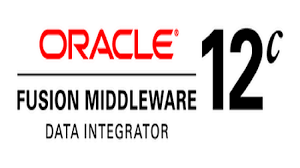Here’s a hands-on project that involves designing and developing an end-to-end data integration solution using Oracle Data Integrator (ODI) 12c:
Project: Customer Data Integration
Objective:
Design and develop a data integration solution to consolidate customer data from multiple source systems into a centralized customer database.
Steps:
- Data Analysis and Requirements Gathering:
- Analyze the source systems and identify the relevant customer data fields and entities.
- Define the desired structure and attributes for the centralized customer database.
- Determine the integration requirements, such as data cleansing, standardization, and consolidation rules.
- Data Model Design:
- Design the data model for the centralized customer database.
- Identify the primary and foreign key relationships between entities.
- Create dimension tables for customer attributes like name, address, contact information, etc.
- ODI Project Setup:
- Create a new ODI project to manage the development and deployment of the data integration solution.
- Set up connections to the source systems and the target customer database.
- ODI Interfaces and Mappings:
- Create ODI interfaces to extract customer data from the source systems and load it into the target database.
- Develop ODI mappings to define the transformations required to cleanse, standardize, and consolidate the customer data.
- Implement business rules, data validation checks, and data enrichment logic as necessary.
- Knowledge Modules (KMs):
- Choose appropriate KMs for the data integration tasks.
- Select Integration Knowledge Modules (IKMs) for data extraction and Loading Knowledge Modules (LKMs) for data loading.
- Customize KMs if needed to handle specific data integration requirements.
- Error Handling and Logging:
- Implement error handling mechanisms in the ODI interfaces to capture and handle data integration errors.
- Configure error tables to store error records for later analysis and reconciliation.
- Enable logging in ODI to capture relevant statistics and debugging information.
- Data Quality and Cleansing:
- Apply data quality techniques to cleanse and standardize the customer data.
- Implement data validation rules and checks to ensure data accuracy and integrity.
- Leverage ODI’s data quality features, such as data profiling and data cleansing transformations.
- Scheduling and Automation:
- Schedule the execution of ODI interfaces to run at regular intervals to keep the customer database up to date.
- Utilize ODI’s scheduling capabilities to automate the data integration process.
- Set up dependencies and sequencing within ODI Load Plans to ensure the proper order of execution.
- Performance Optimization:
- Optimize the performance of ODI interfaces and mappings.
- Leverage ODI’s parallel execution features to process data in parallel, improving throughput.
- Optimize SQL queries, use appropriate indexes, and leverage database-specific features for performance gains.
- Testing and Validation:
- Develop test cases and use representative data sets to validate the data integration processes.
- Verify data accuracy, completeness, and consistency in the centralized customer database.
- Perform integration testing, ensuring that the solution meets the defined requirements.
- Monitoring and Maintenance:
- Set up monitoring and alerting mechanisms to track the execution status of ODI interfaces and detect any issues.
- Establish a maintenance plan to handle changes in the source systems, data model updates, or evolving business requirements.
- Regularly monitor performance, resolve data integration errors, and optimize the solution based on feedback and usage patterns.
Throughout the project, document the design decisions, configurations, and workflows in a project documentation. This documentation will serve as a valuable resource for future maintenance and enhancements.
By completing this hands-on project, you will gain practical experience in designing and developing an end-to-end data integration solution using ODI 12c.
SHARE
